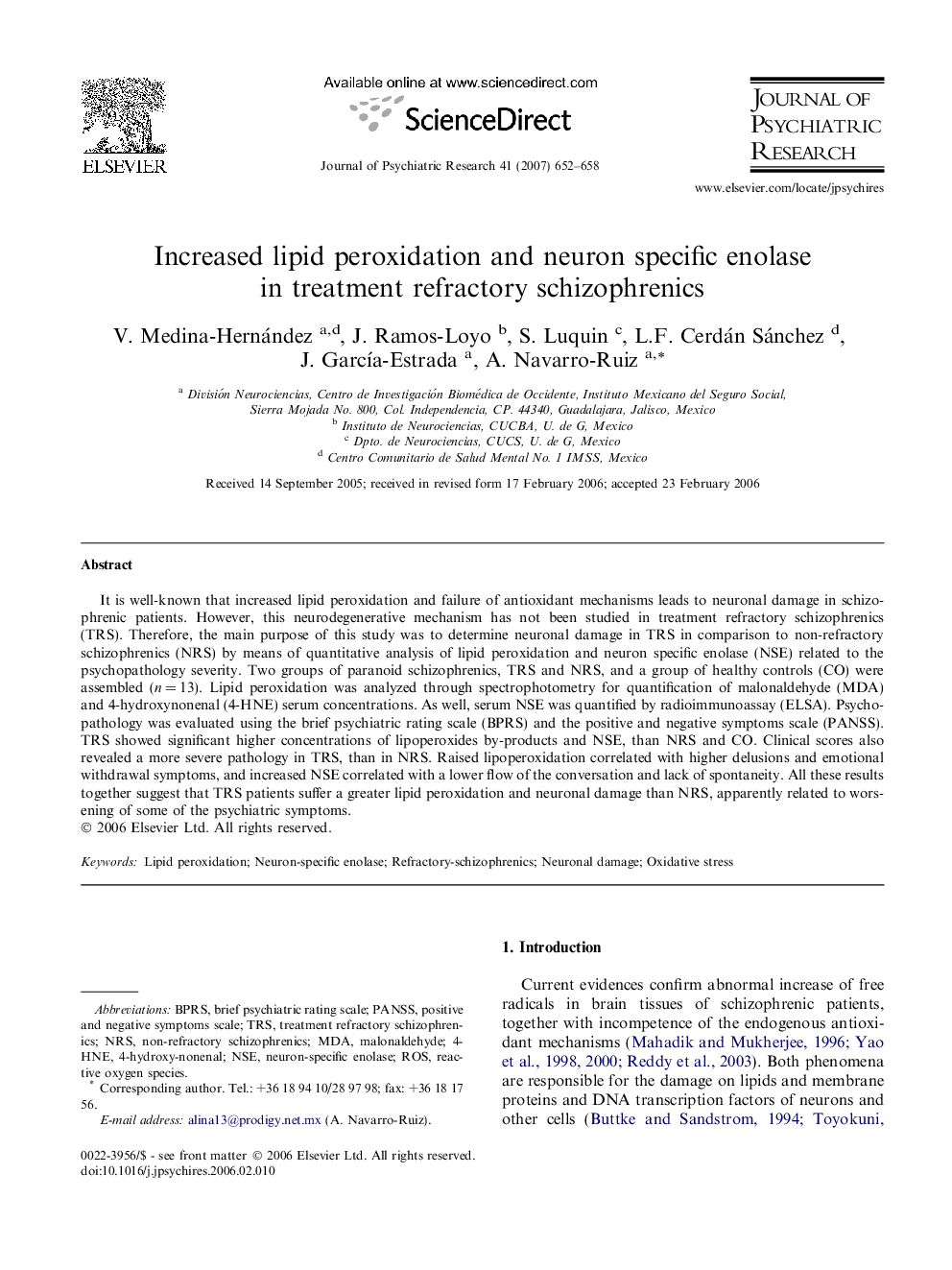| Article ID | Journal | Published Year | Pages | File Type |
|---|---|---|---|---|
| 328137 | Journal of Psychiatric Research | 2007 | 7 Pages |
It is well-known that increased lipid peroxidation and failure of antioxidant mechanisms leads to neuronal damage in schizophrenic patients. However, this neurodegenerative mechanism has not been studied in treatment refractory schizophrenics (TRS). Therefore, the main purpose of this study was to determine neuronal damage in TRS in comparison to non-refractory schizophrenics (NRS) by means of quantitative analysis of lipid peroxidation and neuron specific enolase (NSE) related to the psychopathology severity. Two groups of paranoid schizophrenics, TRS and NRS, and a group of healthy controls (CO) were assembled (n = 13). Lipid peroxidation was analyzed through spectrophotometry for quantification of malonaldehyde (MDA) and 4-hydroxynonenal (4-HNE) serum concentrations. As well, serum NSE was quantified by radioimmunoassay (ELSA). Psychopathology was evaluated using the brief psychiatric rating scale (BPRS) and the positive and negative symptoms scale (PANSS). TRS showed significant higher concentrations of lipoperoxides by-products and NSE, than NRS and CO. Clinical scores also revealed a more severe pathology in TRS, than in NRS. Raised lipoperoxidation correlated with higher delusions and emotional withdrawal symptoms, and increased NSE correlated with a lower flow of the conversation and lack of spontaneity. All these results together suggest that TRS patients suffer a greater lipid peroxidation and neuronal damage than NRS, apparently related to worsening of some of the psychiatric symptoms.
